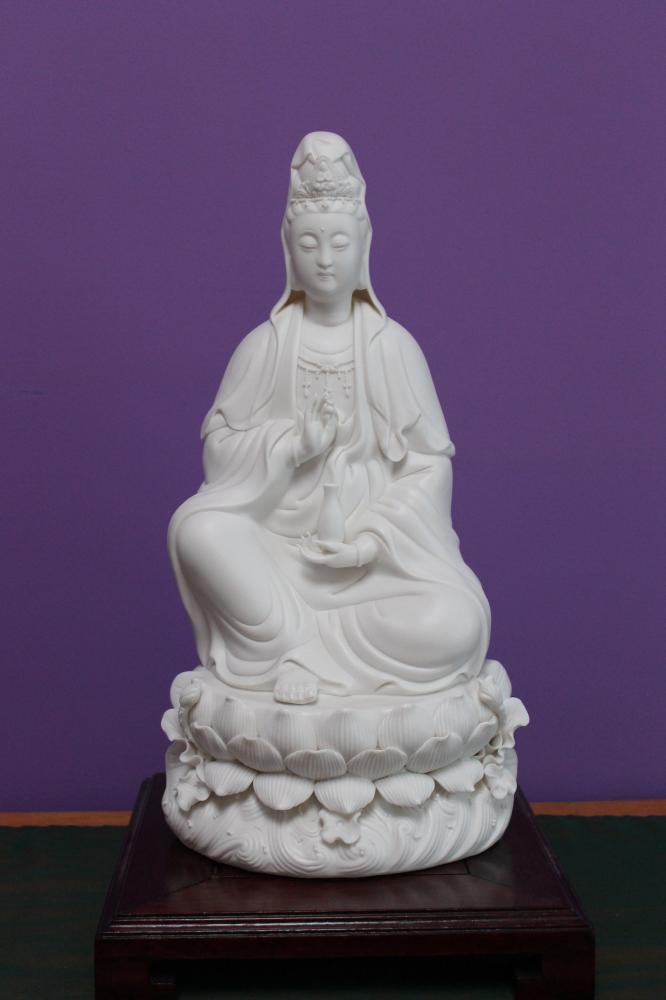Compassion

If you have been in my office anytime in the past year, you have seen the statue of Quan Yin on my cabinet. Quan Yin (also known as Guan Yin or Kwan Yin) is the Buddhist goddess of compassion and healing and her name roughly translates as "The One who Hears the Cries of the World".
I was drawn to this statue not for religious reasons, but rather because it's both beautiful and is a reminder of the calling that I feel we all have: to be a calm, compassionate presence to one another and to alleviate suffering within ourselves and others.
How exactly does one become calm and compassionate in the face of suffering? I'd like to share a few ways I've learned.
1) A willingness to be present with what is
Being present means adopting a stance of openness, non-judgment, and curiosity. When we resist something, it's hard to notice the nuances of our experience. We can allow things to be as they are, and get to know them and ourselves better.
2) Friendly curiosity
Imagine that you are trying to attract an animal in the wild (think a squirrel or a deer, not something dangerous). What do you do? Do you chase after it or do you hold yourself very still and wait for it to come to you? Chances are, if you are trying to make something feel safe and comfortable enough to come closer, your stance is one of open curiosity. You do not have an agenda, but are rather waiting for the animal to reveal itself to you.
This is the way that we can engage with an emotion or sensation that we feel. We can step back, give it space, and allow it to get to know it in its own way and time. This also works with others - we can step back and allow them to feel how they feel without trying to change things. This is particularly difficult for those of us in the helping professions. We've learned to fix, to save, to give advice (often unsolicited!), but what is more often needed is just to listen and to be present with whatever emotions are showing up, in ourselves and in others.
3) Acknowledge what we sense and feel
Acknowledgement, even if only to ourselves, is an important step. It allows us to be truthful and helps us to clarify what we're experiencing. Children often say, "Mom, watch. Watch me. Are you watching me?" when they're wanting our attention. Thoughts, emotions, and sensations can be the same way. Acknowledgment is a way of saying, "Yes. I see you," to those things we might have been ignoring, so that we can really start to look at them with fresh eyes.
Part 2 to follow...



